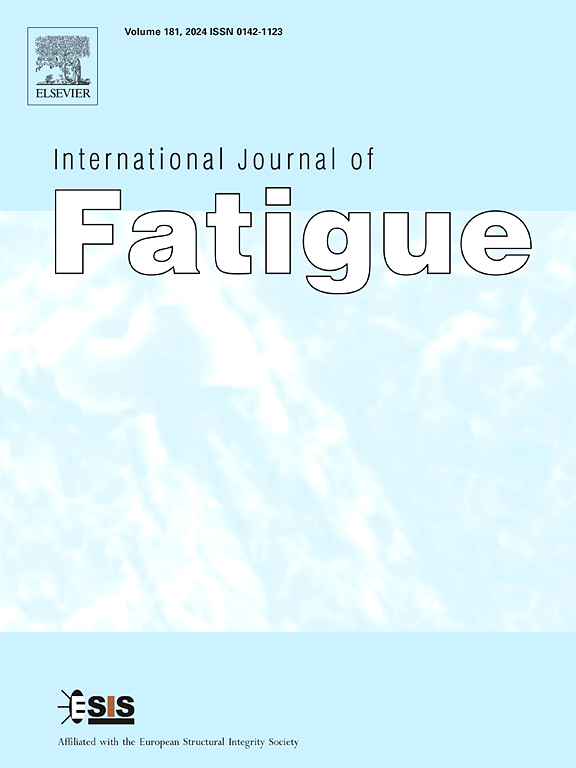Comparison of low cycle fatigue data of X52 pipeline steel in air and gaseous hydrogen using conventional and hollow specimen
IF 5.7
2区 材料科学
Q1 ENGINEERING, MECHANICAL
引用次数: 0
Abstract
The present work compares low cycle fatigue results in high pressure gaseous hydrogen and in ambient air using hollow (HS) and conventional specimens (CS). For the given X52 pipeline steel and test conditions (ambient air and 20 MPa hydrogen gas pressure, Rε = 0.1, f = 0.1 Hz), the presence of a borehole had no significant influence on the elastic–plastic deformation behavior of the HS compared to CS. Test results in ambient air were comparable. Data for CS tested in hydrogen gas was not available but was approximated by fatigue crack growth results from the open literature at comparable test conditions. Hydrogen-assisted reduction of fatigue life was sufficiently similar in both, HS and CS. For the HS tested in H2 gas, fatigue cracks always initiated at the inner bore gauge surface.
X52管线钢在空气和气体氢中的低周疲劳数据比较
本工作比较了在高压气态氢和环境空气中使用空心(HS)和常规试样(CS)的低周疲劳结果。对于给定的X52管道钢和试验条件(环境空气和20 MPa氢气压力,Rε = 0.1, f = 0.1 Hz),钻孔的存在对HS的弹塑性变形行为没有显著影响。环境空气中的测试结果具有可比性。在氢气中测试的CS数据是不可用的,但在可比的测试条件下,由公开文献的疲劳裂纹扩展结果近似。氢辅助疲劳寿命的降低在HS和CS中是足够相似的。在H2气体中测试的HS,疲劳裂纹总是在内孔规表面产生。
本文章由计算机程序翻译,如有差异,请以英文原文为准。
求助全文
约1分钟内获得全文
求助全文
来源期刊

International Journal of Fatigue
工程技术-材料科学:综合
CiteScore
10.70
自引率
21.70%
发文量
619
审稿时长
58 days
期刊介绍:
Typical subjects discussed in International Journal of Fatigue address:
Novel fatigue testing and characterization methods (new kinds of fatigue tests, critical evaluation of existing methods, in situ measurement of fatigue degradation, non-contact field measurements)
Multiaxial fatigue and complex loading effects of materials and structures, exploring state-of-the-art concepts in degradation under cyclic loading
Fatigue in the very high cycle regime, including failure mode transitions from surface to subsurface, effects of surface treatment, processing, and loading conditions
Modeling (including degradation processes and related driving forces, multiscale/multi-resolution methods, computational hierarchical and concurrent methods for coupled component and material responses, novel methods for notch root analysis, fracture mechanics, damage mechanics, crack growth kinetics, life prediction and durability, and prediction of stochastic fatigue behavior reflecting microstructure and service conditions)
Models for early stages of fatigue crack formation and growth that explicitly consider microstructure and relevant materials science aspects
Understanding the influence or manufacturing and processing route on fatigue degradation, and embedding this understanding in more predictive schemes for mitigation and design against fatigue
Prognosis and damage state awareness (including sensors, monitoring, methodology, interactive control, accelerated methods, data interpretation)
Applications of technologies associated with fatigue and their implications for structural integrity and reliability. This includes issues related to design, operation and maintenance, i.e., life cycle engineering
Smart materials and structures that can sense and mitigate fatigue degradation
Fatigue of devices and structures at small scales, including effects of process route and surfaces/interfaces.
 求助内容:
求助内容: 应助结果提醒方式:
应助结果提醒方式:


